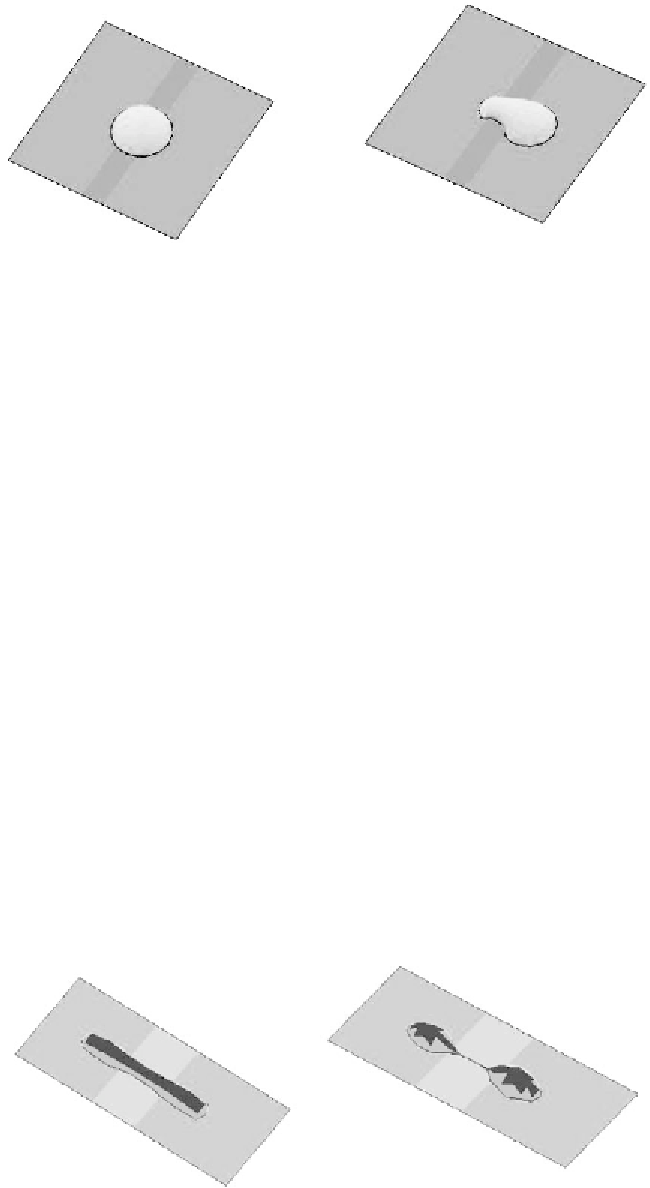Biomedical Engineering Reference
In-Depth Information
Figure 4.28
A spherical drop cannot be split; it just escapes to any one of the two hydrophilic re-
gions. The band in the middle is hydrophobic (Evolver numerical software [29]).
is plotted in Figure 4.30 for two very different liquids. For an usual buffer liquid
(continuous line), with a surface tension
g
LG
= 70 mN/m and hydrophilic and hy-
drophobic contact angles of 70° and 115°, the optimal cutting ratio is
CR
= 1/2 and
the elongation required is
A
> 5. An “open” water droplet has to be stretched on
at least 5 electrodes to be split by electrowetting. The domain of possible splitting
depends on the values of the contact angles and on the elasticity of the interface. In
Figure 4.30, the dotted line corresponds to an ionic liquid with 60° and 93° contact
angles.
Numerical simulation confirms the possibility of splitting a droplet in a covered
system provided that the vertical gap is sufficiently small. Figure 4.31 shows how a
droplet confined between two parallel plates is easily cut in two by electrowetting
forces.
We have already seen that in open EWOD systems, division is very difficult for
most liquids. So it is understandable that for closed EWOD system, there exists a
limit value for the vertical gap
d
lim
above which division is not possible. For a square
electrode of dimension
e
, an approximate criterion for the limit vertical gap is
δ
lim
= -
cos
θ
(4.46)
0
e
where
q
0
is the nonactuated contact angle (note that
q
0
is larger than
p
/2, so that
cos
q
0
is negative). This relation may be derived by using the Laplace law in the
Figure 4.29
Division of an initially stretched droplet predicted by the Evolver numerical software.



